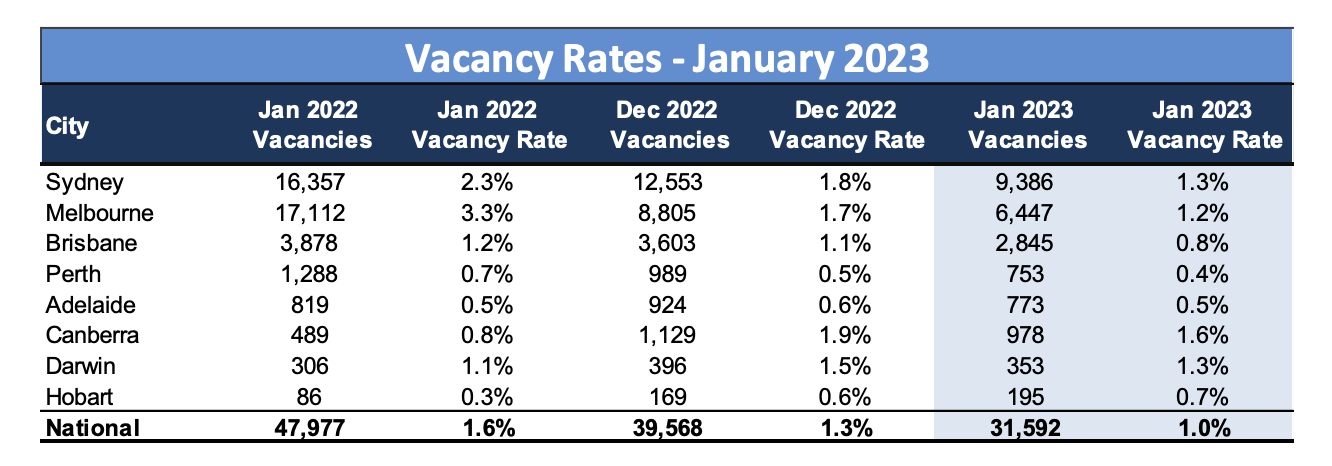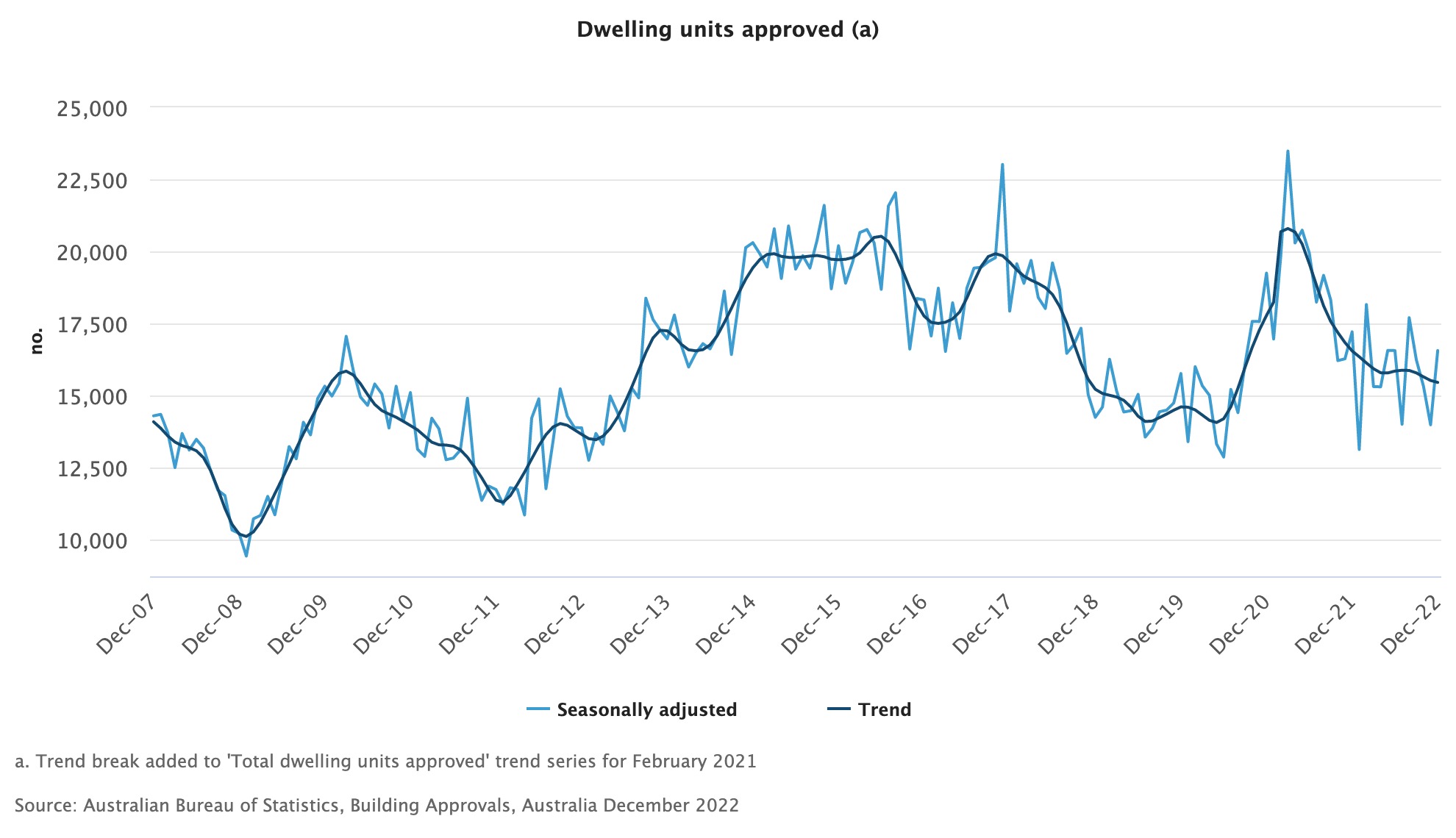Australian property prices have been on a downward spiral ever since the Reserve Bank of Australia started raising interest rates, with CoreLogic’s January national home value index down 8.9% from its peak in April last year.
And with the Reserve Bank of Australia recently warning that interest rates have not peaked, it’s likely we haven’t reached the bottom of the downturn just yet – with PropTrack forecasting further declines of up to 10% by the year’s end.
But prospective property investors shouldn’t panic. After all, property markets move in cycles, so you should view this current downturn as par for the course.
What’s more, when you take a longer-term perspective, you’ll find that Australian property remains a sound investment and a great way to build real wealth.
Demand vastly outstrips supply
That’s because Australia’s property markets generally conform to the law of supply and demand.
And right now, Australia has a housing shortage – with Domain’s latest rental report finding available rental listings plunged 38% year-on-year during the December quarter to the lowest level on record.
But while rental stock is incredibly low, demand is growing, particularly with overseas migration returning to its pre-pandemic levels.
As a result, rental markets are tightening in Australia’s capital cities, with the national vacancy rate dropping to an all-time low of 1.0% in January, according to SQM Research.

As the table below shows, this has caused rents to skyrocket – with SQM reporting that capital city asking rents rose by another 2.4% over the month to February 12, to be up 24.7% on the year.

It’s unlikely these conditions will ease anytime soon, particularly as many property investors sold their rental properties during the recent boom to cash in on the capital gain.
For example, PropTrack estimates that, towards the end of 2021, 25% of all home sales were previously rental properties compared to a pre-pandemic average of 15%.
These rental properties aren’t being replaced either, with recent Australian Bureau of Statistics data showing new investor loan commitments were down 28.3% year-on-year in December.
The supply-demand imbalance isn’t just set to continue in Australia’s rental markets; there’s also a looming supply crunch brewing in the wider housing market with the National Housing Finance and Investment Corporation predicting a shortfall of 163,400 homes between 2025-32 as household formation exceeds housing supply.
It’s worth bearing in mind that the NHFIC’s prediction was made before rising costs and labour shortages hit construction projects, with the most recent ABS data showing that total dwelling commencements fell 21.2% in the September 2022 quarter when compared to the same time the previous year.
The construction pipeline isn’t looking great either, with the total number of new homes approved over 2022 falling 21.8% when compared to 2021.

What does this all mean?
Well, when supply fails to keep up with demand, prices typically rise. So this all indicates that Australian property prices will, once again, resume their climb upward. Though this time, the boom won’t be driven by ultra-low interest rates (which were never going to last), but rather by low levels of housing stock.

